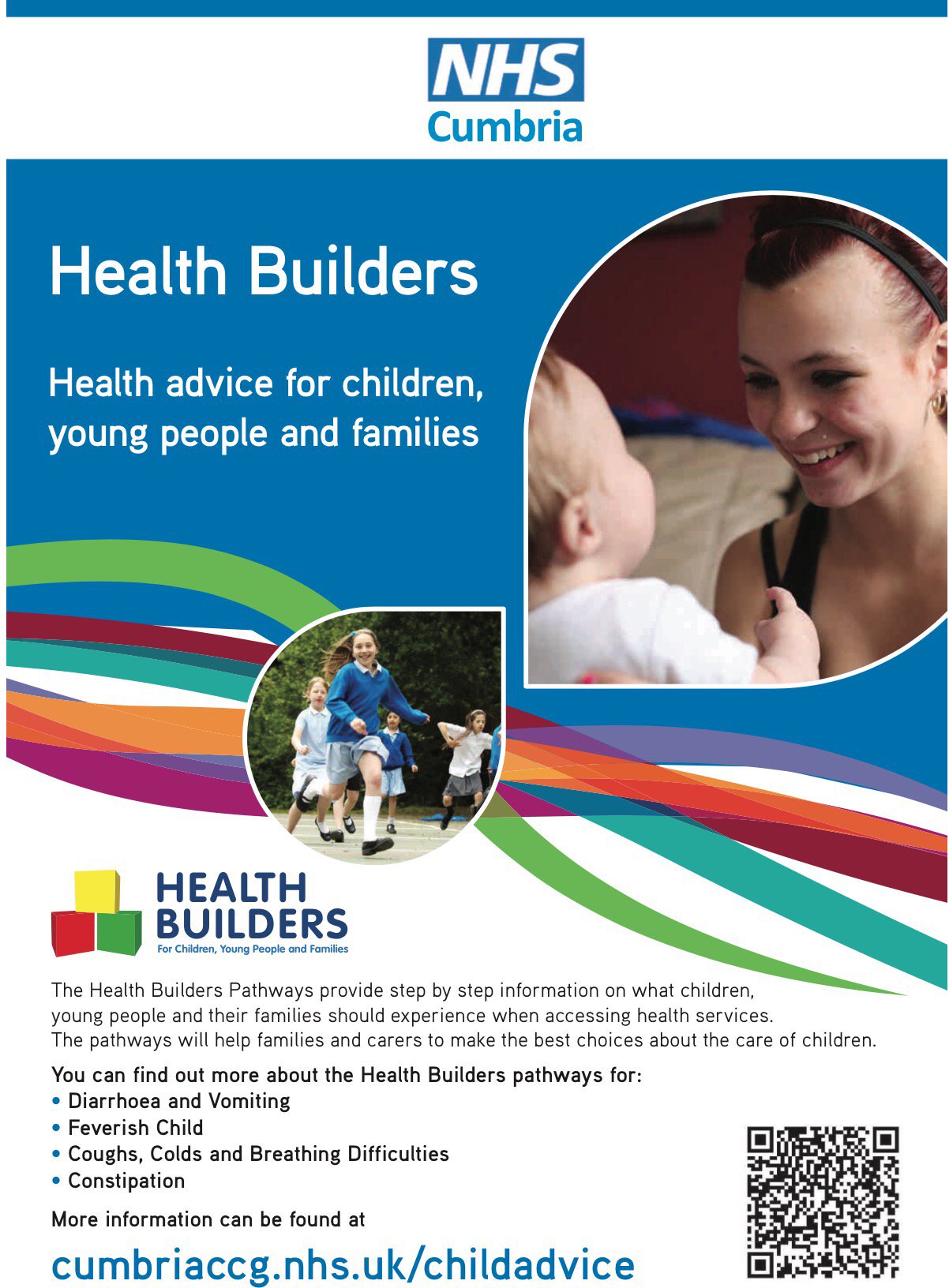Within Cumbria we are looking to achieve this goal by having fair access to a range of services and support to ensure a healthy future. With a focus on early intervention, building resilience, and when required enable ready access to safe, sustainable, high-quality health services that are designed around their needs to achieve the best possible outcomes.
Current work in Cumbria involves the development and implementation of 4 Parent/Carer facing pathways (High Temperature, Constipation, Diarrhoea & Vomiting and Coughs, Colds & Breathing Difficulties) covering the conditions which result in the highest number of emergency admissions for children.
These pathways take the form of guides for parents/carers and aim to help parents/carers understand how to manage their child’s condition and explain when to seek help. The parent/carer facing pathways are available electronically via a web page, posters and in the future through inserts in Red Books given to parents prior to the birth of their child. A professional-facing sick child pathway, which addresses all four of the above conditions in a single pathway has been developed to provide clinical governance to underpin the pathway information.
The professional-facing pathway is targeted at GPs and Nurse Practitioners in Primary Care. It aims to support GPs and other referrers in assessing children who are ill and help them to decide the best course of action. The professional-facing pathway will be available to Primary Care practitioners via their electronic systems *(EMISS Web/Vision) and is supported by the Ill Child Traffic Light tool, which populates patient information and can eventually be developed to provide an electronic referral. Future plans encompass rolling the pathways out to Community Paramedics and other health care providers.
The pathways are Cumbria wide and predominantly for under 5's. However, the information can be used for older children. The pathways work is intended to be an enabler project supporting Alternatives to Admissions (A2A) projects currently being undertaken in Cumbria, under the banner of Better Care Together (Vanguard) and the Success Regime, to achieve a reduction in admissions. You can find the pathway documents here https://www.dropbox.com/sh/vj00p9fb8tt0suk/AAABS4EkK3EwV4WERarVxNnca?dl=0 The pathways chosen for the first tranche were those that cause the most urgent care admissions to the Short Stay Paediatric Assessment Units (SSPAU) and to the Paediatric wards. The children’s pathways main focus is on:- + providing advice on management to parents and carers + standardising good practice in the assessment of children in primary care + improving dialogue between primary and secondary care regarding management of children + development of integrated services + delivered as close to home
For more information contact [email protected]

